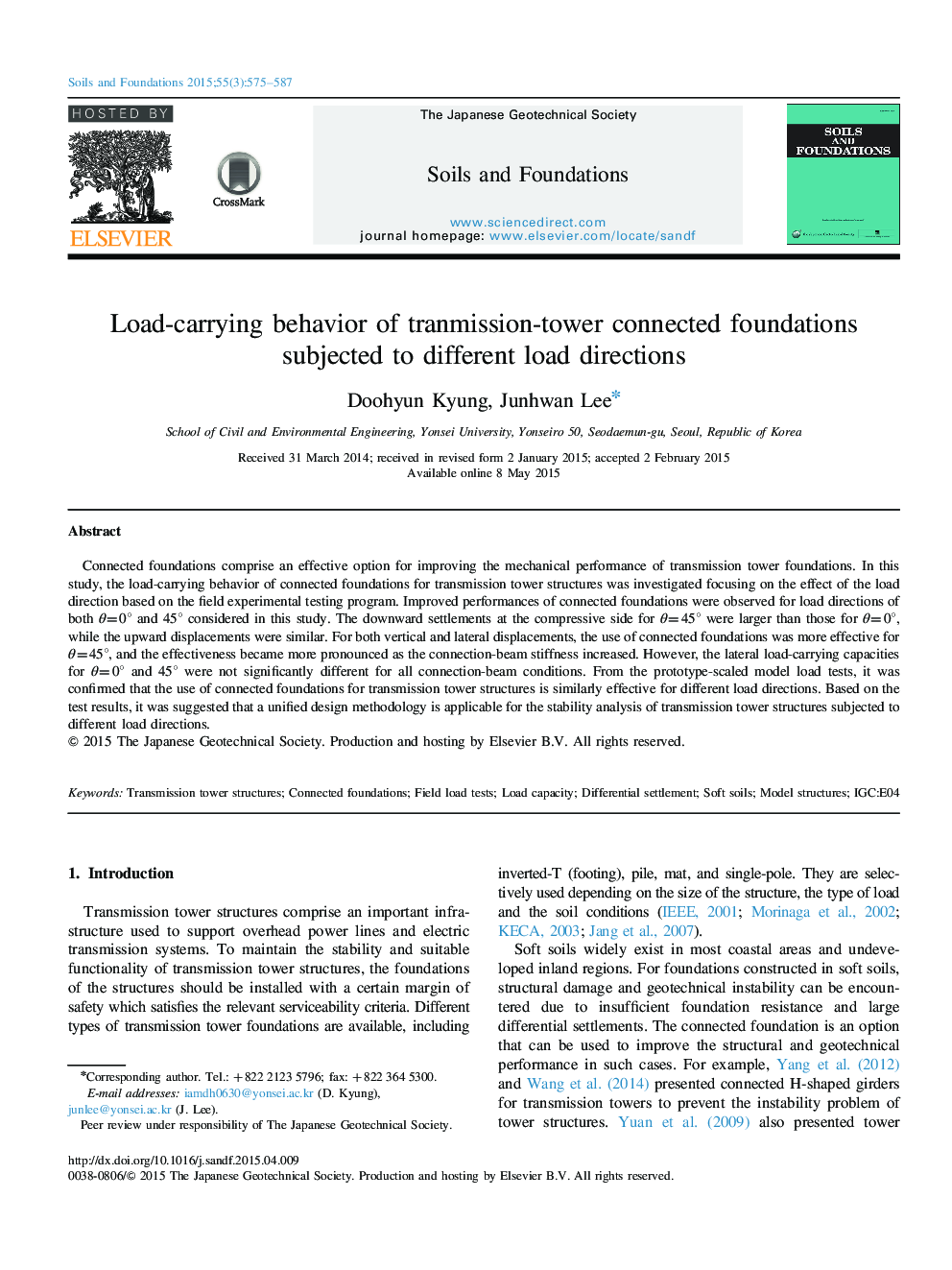| Article ID | Journal | Published Year | Pages | File Type |
|---|---|---|---|---|
| 307189 | Soils and Foundations | 2015 | 13 Pages |
Connected foundations comprise an effective option for improving the mechanical performance of transmission tower foundations. In this study, the load-carrying behavior of connected foundations for transmission tower structures was investigated focusing on the effect of the load direction based on the field experimental testing program. Improved performances of connected foundations were observed for load directions of both θ=0° and 45° considered in this study. The downward settlements at the compressive side for θ=45° were larger than those for θ=0°, while the upward displacements were similar. For both vertical and lateral displacements, the use of connected foundations was more effective for θ=45°, and the effectiveness became more pronounced as the connection-beam stiffness increased. However, the lateral load-carrying capacities for θ=0° and 45° were not significantly different for all connection-beam conditions. From the prototype-scaled model load tests, it was confirmed that the use of connected foundations for transmission tower structures is similarly effective for different load directions. Based on the test results, it was suggested that a unified design methodology is applicable for the stability analysis of transmission tower structures subjected to different load directions.
